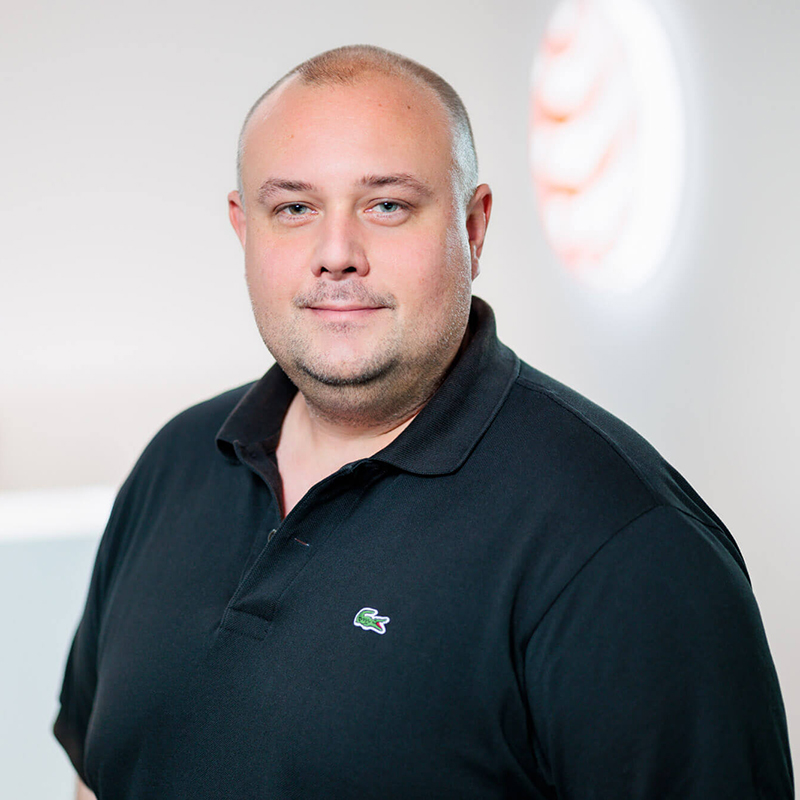Thomas Clever
After graduating from Utrecht University of the Arts with a bachelor’s degree in graphic design, Thomas Clever went on to complete a master’s degree in editorial design with a specialisation in data visualisation. He teamed up with Gert Franke in 2008 to found CLEVER°FRANKE, which quickly evolved into a leading digital data design and technology agency focused on information and data visualisation. The agency is a data visualisation information design pioneer with a team that has since grown to more than 50 specialists and developed ground-breaking solutions for clients such as Google, Warner Music Group, Signify, Eurovision Song Contest, Tenable, LGT, UNICEF and Boeing. C°F’s achievements have already been recognised by numerous international awards, including the honorary title of Red Dot: Agency of the Year in 2023.
Thomas Clever is a member of the nomination committee for the Dutch Design Awards in the Young Designer category and is co-founder of the Sensor Lab in Utrecht.

Red Dot in an interview with Thomas Clever
Last year, CLEVER°FRANKE was named the Red Dot: Agency of the Year. How did your team take it?
We were all really surprised to find out we’d been named Agency of the Year. Obviously, the entire team is proud, excited and motivated to continue what we’re all so passionate about. At the same time, we perceive it as a tribute to all the hard work that so many people have been doing over the years. The festivities in Berlin during and after the award ceremony were particularly memorable for us – and our entire team was there to celebrate.
Did anything about this year’s jury session particularly surprise you?
Some of the projects we selected as award winners made me pretty envious, but in a positive way. As jury members, we see so many projects, and then one comes along that really blows our minds and we think, “I wish I had thought of that”. Often, these projects take an idea or concept, reduce it to its essence and then build something amazing from there.
CLEVER°FRANKE specialises in information design and data visualisation. The jury session gave you a good overview of the latest developments in the design scene. Are designers leveraging the benefits of data?
We see data as a form of content, just like texts, imagery and video. Data might seem daunting to some creatives, but ultimately it’s just a material that can be sculpted to showcase both beauty and meaning. It’s a mindset.
From what I’ve seen as a juror, I’d say data is still under-utilised, but that doesn’t mean there aren’t designers out there doing amazing work with data. Funnily enough, the Junior Award submissions embraced data to a greater extent. Maybe the next-generation designers have a stronger affinity with data.
But, I’m not saying the creatives themselves are to blame. Clients must be daring and trust their design team to do the best work possible.
What would you say is the biggest design challenge in the development of digital communication solutions?
That’s a good question and a very difficult one to answer. There are a lot of parameters involved, many of which are interlinked. Digital communication solutions have to work across many different devices, resolutions, channels and technologies. You could say they’re a triad of scalability, accessibility and security.
On top of that, the more widespread use of AI in our field is going to cause a seismic shift in everything we do and how our industry operates. AI can play a pivotal role in making some of the more technological challenges easier to deal with. At the same time, it will make certain aspects obsolete and irrelevant. We creatives need to embrace the possibilities of these new technologies and apply them with conviction.
What does a website have to look like to keep you interested beyond the first glance?
It must speak to the heart, eye and mind. Ideally within a couple of seconds.
Your agency also has its own in-house projects. Are you working on anything exciting right now?
We launched our “AI Lab” this year. It’s where we do our own R&D on AI, data and design. We work on all kinds of projects in the AI Lab, from AI-generated data visualisations to AI design templates for data-driven applications. We’re focusing on ethics, transparency and information reliability because visualisation will play a crucial role here. We’ve just completed our first AI-generated identity project, so as you can see, we believe there’s a big role for us to play in this field, and I’m very excited about the possibilities.
Will you personally ever let go of data visualisation? What do you find so fascinating about it?
Probably not. It’s just one of my professional quirks. Another is that I’ll never accept bad typography. Data visualisation helps us to discover patterns and to create an overview if something is seemingly complex, and that’s always exciting. It also opens up new perspectives and allows us to unravel the world’s complexity. Why would you ever want to let that curiosity go?


